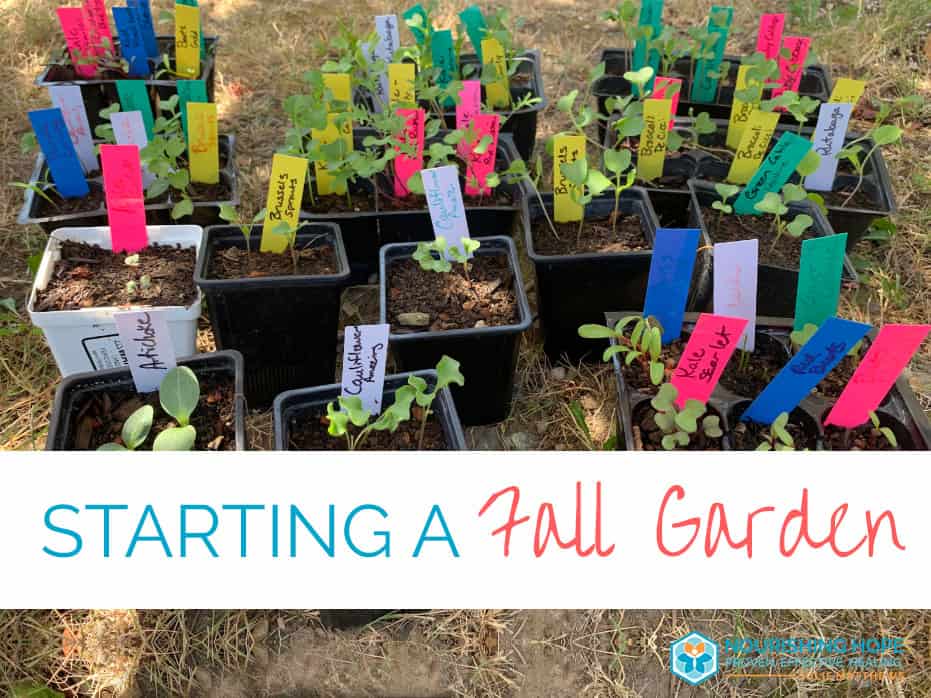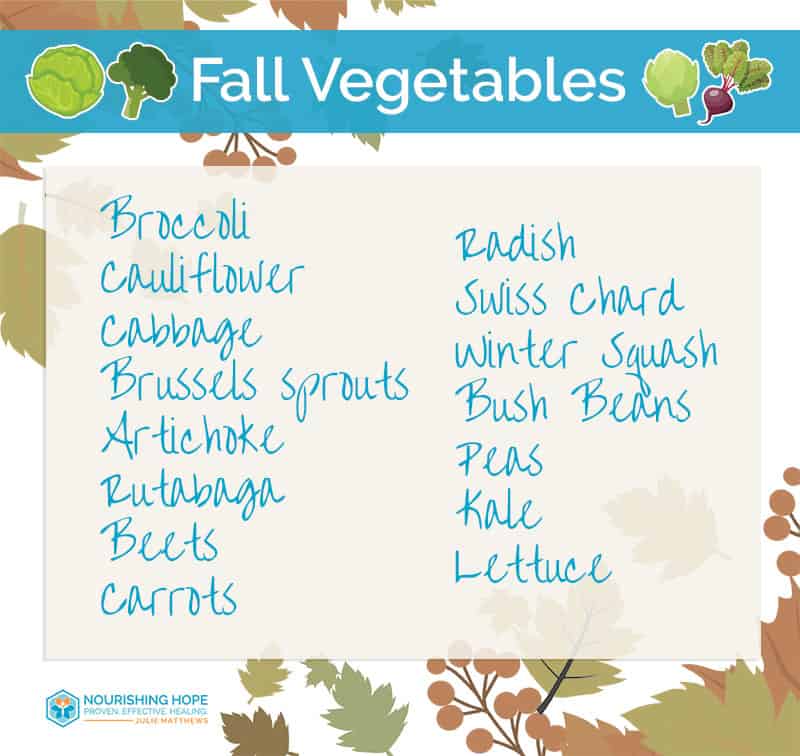
It’s mid summer and if you have a garden you are probably harvesting, or just beginning to harvest, your summer vegetables like zucchini, tomatoes, peppers, eggplant, and green beans.
But can you believe… it’s already time to think about fall crops?!
If you didn’t have a chance to plant a summer garden, now’s your chance to plant some vegetables for the fall.
You can actually grow almost anything in the fall as long as you have time before the frost. So you can plant tomatoes, zucchini, green beans, and more “summer crops.”
But during this time, you can also plant FALL CROPS.
Fall crops like broccoli, cauliflower, and cabbage do better in the cooler weather and don’t do well in the summer, so they need to be grown in the fall. While most summer crops can continue to grow into fall.
So a fall garden is great because you can grow virtually anything!
How to Plan a Fall Garden
Your fall crops (and summer crops) need to be planted and grown to maturity before your first frost hits. You can learn more about how to do that in this post.
Most plants take about 55 – 120 days to grow to maturity depending on the vegetable and if you are growing from seed or seedling transplants.
So check the length of growing time to maturity of the vegetable you want to grow. Count back the number of days you’ll need to start the seeds or get the seedlings in the ground. The Old Farmers’ Almanac has a great chart that’s helpful.
If you have a shorter growing season, where your first frost is around early September, in most cases you’ll want to get seedlings planted in your garden in July. If you have a long growing season that runs through the end of October or later, you can start germinating seeds now (end of July), and/or transplant seedlings typically in August, or even Sept depending on the crop.
Fall Vegetables
In addition to any summer crops, consider the following cooler weather crops such as peas, cruciferous vegetables, root vegetables, and winter squash.
I love peas such as snap peas but as the summer heat takes hold they don’t do well and die back. But you have another opportunity to grow peas such as snap peas, snow peas, and shelling peas in the fall as the weather gets cooler! Also artichoke is a fun crop to grow in the fall. In fact, they are perennials and will grow for about 5 years, so consider a spot where you can leave them for next year. Rutabaga are one of my favorite vegetables – they make great fries – and are a wonderful fall crop.
 Fall Vegetables
Fall Vegetables
- Broccoli
- Cauliflower
- Cabbage
- Brussels Sprouts
- Artichoke
- Rutabaga
- Beets
- Carrots
- Radish
- Swiss Chard
- Winter Squash
- Bush Beans
- Peas
- Kale
- Lettuce




0 Comments